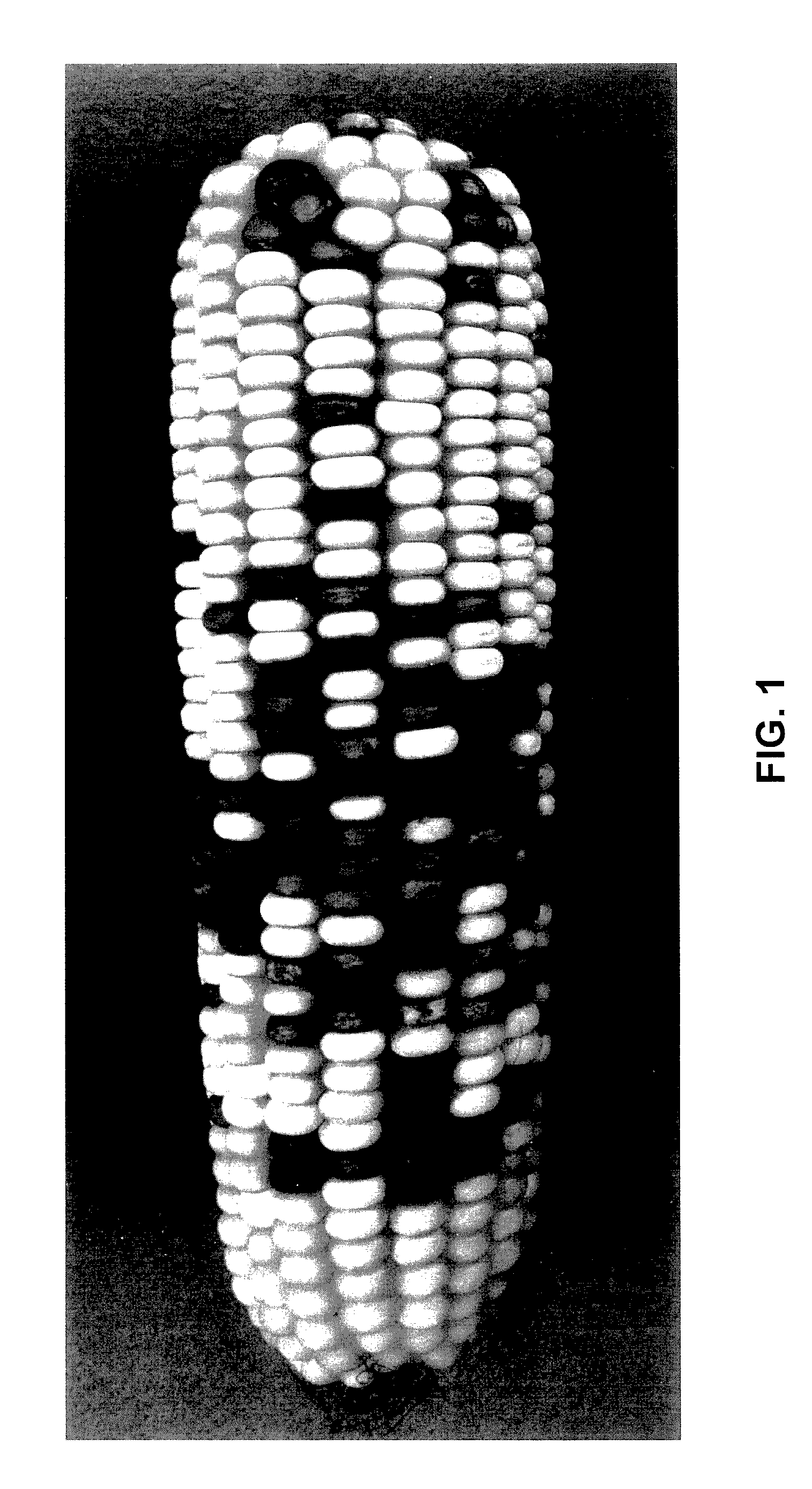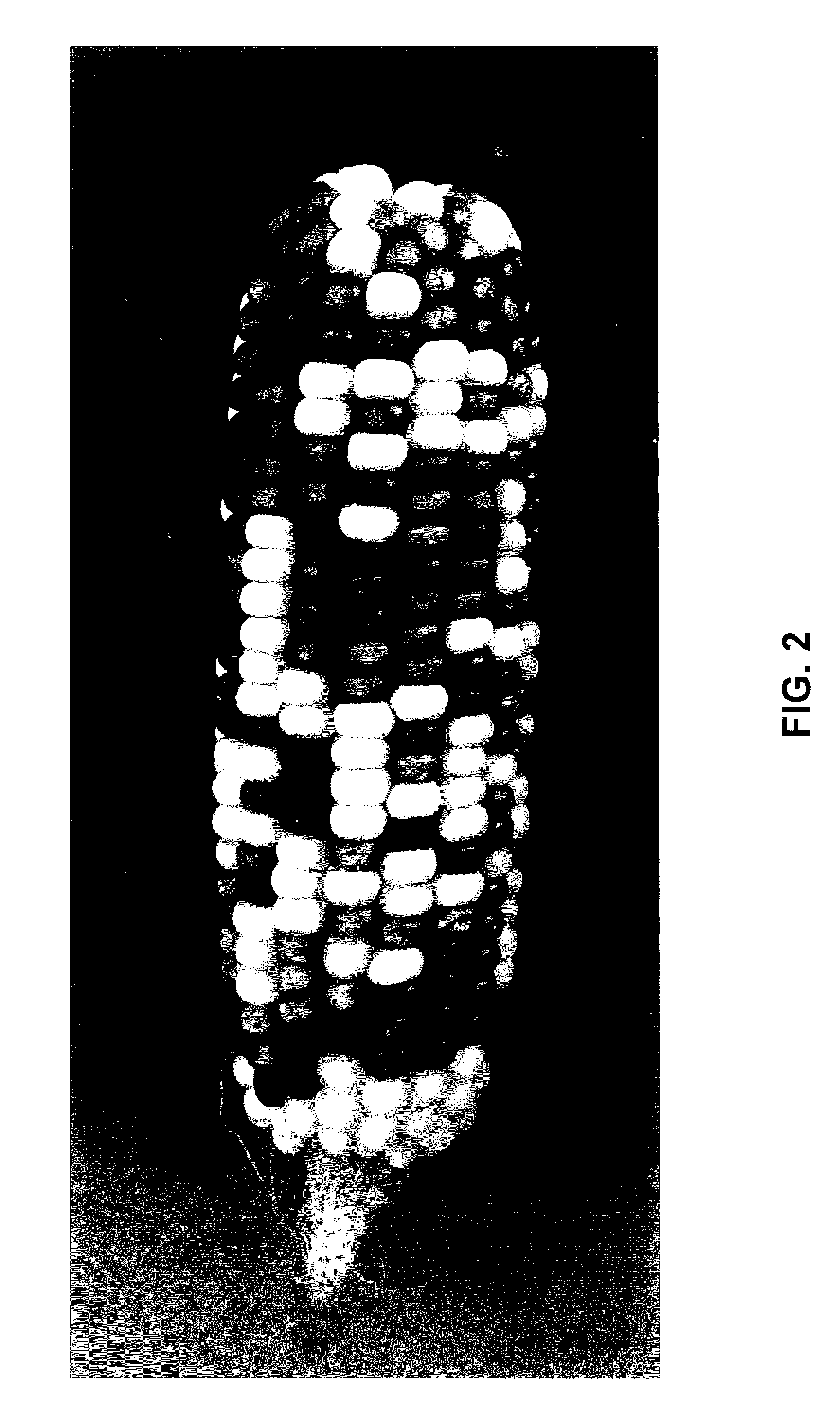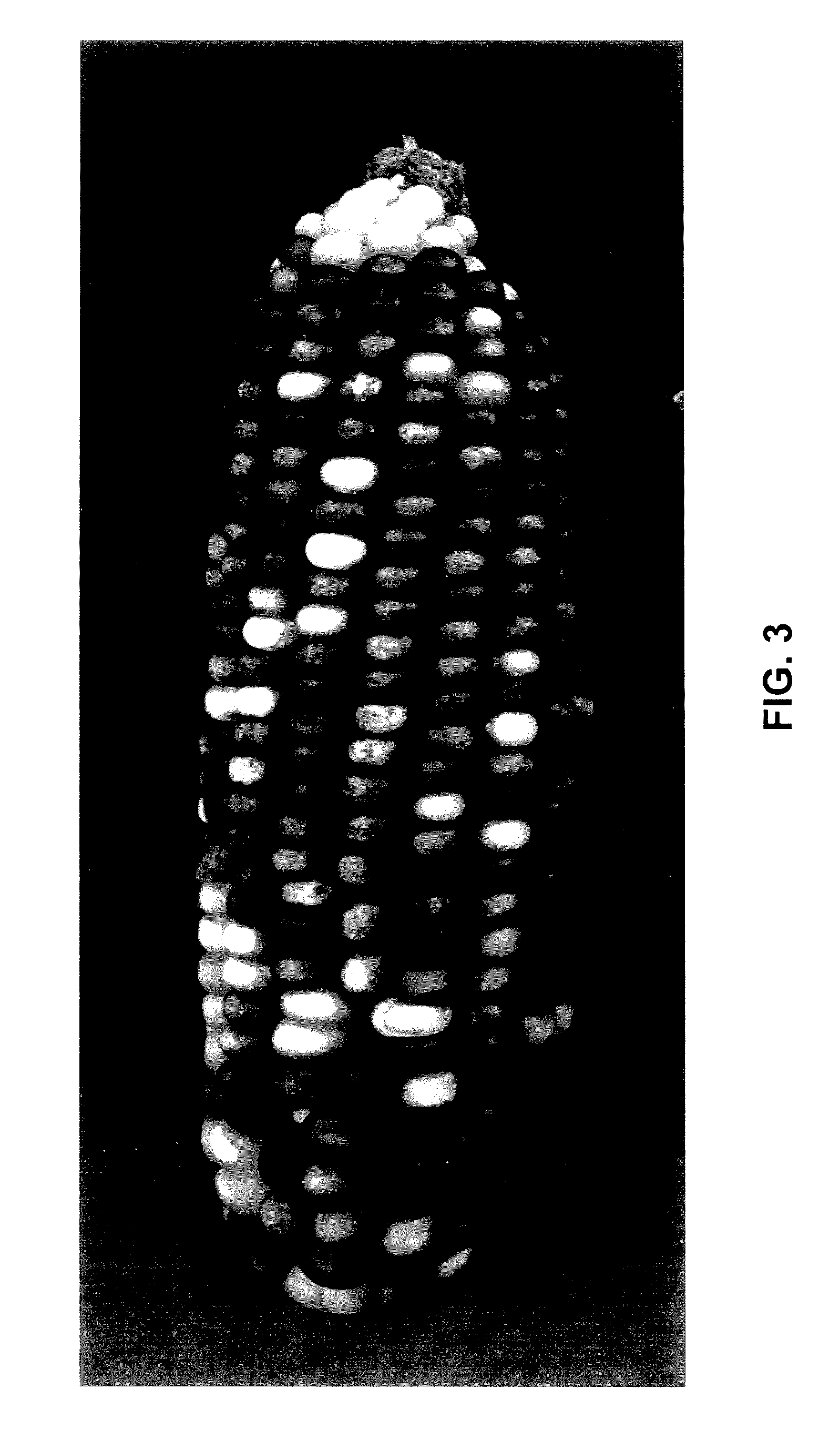Grain production
a grain and grain technology, applied in the field of new methods of grain production, can solve the problems of poor grain yield, significant impact on grain yield, and inability to self-pollinate, and achieve the effect of quick obviousness to the naked ey
- Summary
- Abstract
- Description
- Claims
- Application Information
AI Technical Summary
Benefits of technology
Problems solved by technology
Method used
Image
Examples
example 1
[0052]The invention described herein was practiced using a commercial hybrid (H1) as a female in one location in central Iowa. Blocks of 12 rows (width of 0.76 m (2.5 feet) per row for a total of 9.1 m (30 feet) in width) that were 13.7 m (45 feet) long of each hybrid were grown. One pollen donor inbred (P1) that was unrelated to H1 was grown at a distance of greater than 45.7 m (150 feet) away from the hybrid block. The pollen donor was a publicly available line from the USDA-ARS National Plant Germplasm System, and carried a gene for expression of anthocyanin in the endosperm of the kernel. When P1 is used as a male pollen source to pollinate, successful pollination of kernels is quickly obvious to the naked eye by observing the purple color of the mature kernels on an ear.
[0053]To practice the invention, water was sprayed on the tassels of the H1 grain production block (H1) at about 8:15 am to delay pollen shed from these female rows until about 8:45 am.
[0054]After spraying the w...
example 2
[0056]The invention was practiced using 2 commercial hybrids (H1 and H2) as females in one location in central Iowa. Blocks of 12 rows (width of 0.76 m (2.5 feet) per row for a total of 9.1 m (30 feet) in width) that were 13.7 m (45 feet) long of each hybrid were grown. Three pollen donor inbreds (P1, P2, and P3) that were unrelated to these commercial hybrids were grown at a distance of greater than 45.7 m (150 feet) away from the hybrid blocks. The three pollen donors were publicly available lines from the USDA-ARS National Plant Germplasm System, and carried a gene for expression of anthocyanin in the endosperm of the kernel. When used as a male pollen source to pollinate, successful pollination of kernels is quickly obvious to the naked eye by observing the purple color of the mature kernels on an ear.
[0057]In the very beginning of the pollination window, the invention was practiced by coercing pollenM from the tassels of the pollen donor (P1, P2, and P3) males and collecting th...
example 3
[0063]An example of the invention described herein is the common situation in commercial corn grain production where there are large fields (20.2-40.5 hectares (50-100 acres) per field or more) of different and unrelated hybrids, in many case from different commercial vendors. These fields will largely self-pollinate and therefore will incur lower yield than if they were cross pollinated with an unrelated pollen source. On average, a pure stand of corn will contain greater than 95% grain at harvest that is the result of self-pollination. Goggi et al. ((2006) Field Crops Res. 99: 147-157) showed outcrossing between adjacent grain fields was far less than this: 0.4% at 35 m, less than 0.05% at 100 m.). Many of these large fields of corn will be of different maturities and therefore flowering and shedding pollen at different times. In this example, the pollen from the earliest shedding field is collected and preserved / stored until the second unrelated hybrid field begins to flower, and...
PUM
 Login to View More
Login to View More Abstract
Description
Claims
Application Information
 Login to View More
Login to View More - R&D
- Intellectual Property
- Life Sciences
- Materials
- Tech Scout
- Unparalleled Data Quality
- Higher Quality Content
- 60% Fewer Hallucinations
Browse by: Latest US Patents, China's latest patents, Technical Efficacy Thesaurus, Application Domain, Technology Topic, Popular Technical Reports.
© 2025 PatSnap. All rights reserved.Legal|Privacy policy|Modern Slavery Act Transparency Statement|Sitemap|About US| Contact US: help@patsnap.com



